Ecuador, located in South America, is bordered by Colombia, Peru, and the Pacific Ocean. The country’s surface area is 109,484 square miles, with about 2,595 square miles devoted to water. Ecuador has several landscapes, including mountains, valleys, forests, jungles, beaches, and volcanoes. The country is also home to beautiful lakes and rivers. Many of these unique natural areas lie within the country’s beautiful national parks, 11 of which we discuss below.
1. Cayambe Coca National Park
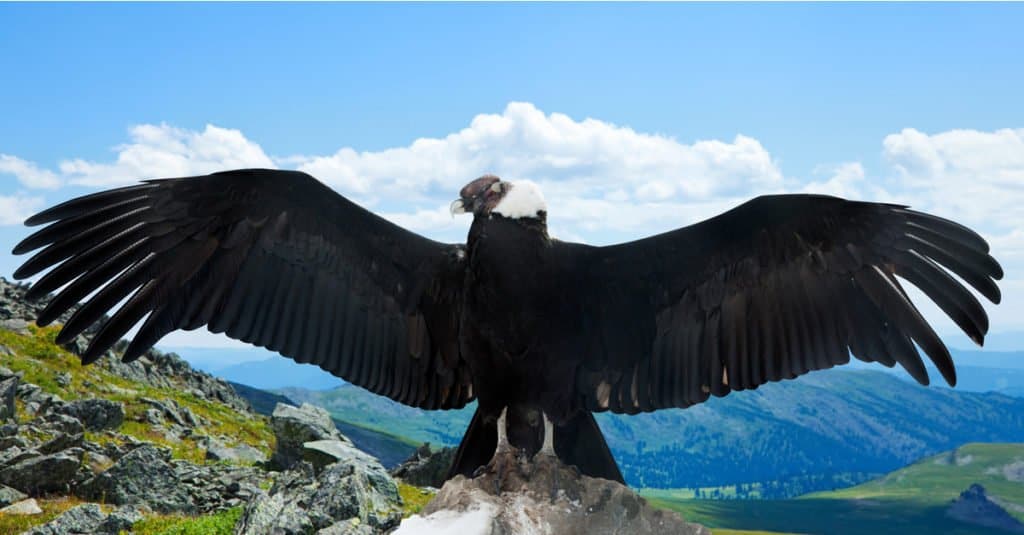
Some of the most beautiful animals in the park are the Andean condors.
©BearFotos/Shutterstock.com
First on our list is Cayambe Coca National Park, located along the Equator, only 24 miles from Ecuador’s capital, Quito. The park covers an impressive 996,090 acres. This nationally recognized land is unique because it features two very different regions of Ecuador, including the humid rainforest of the Amazon basin and the Cayambe Volcano. Cayambe Coca National Park was first established in 1970. While visiting the national park, you can climb Cayambe Mountain and seek accommodations at Ruales-Oleas-Bergé Refuge. However, for those of us who aren’t climbers, there are also many lakes, forests, and waterfalls to enjoy. Additionally, the park is home to many different animals and plants. Some of the most beautiful animals in the park are the Andean condors, spectacled bears, Páramo rabbits, and at least 365 species of birds.
2. Cotopaxi National Park
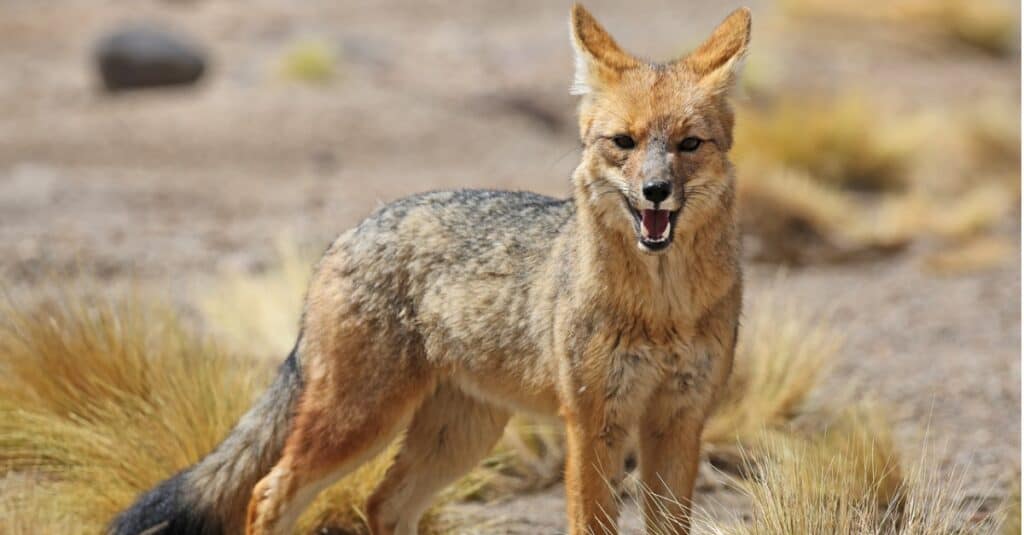
Many animals, such as Andean foxes, inhabit Cotopaxi National Park.
©iStock.com/tane-mahuta
Cotopaxi National Park was established on August 11, 1975, and is governed by the Ministry of the Environment (Ecuador). The park protects and covers 82,520 acres in the Cotopaxi, Napo and Pichincha provinces. There are three volcanos within the park. The Rumiñawi Volcano is dormant, while the Sincholagua Volcano is inactive. The Cotopaxi National Park gets its name from the active Cotopaxi Volcano, with its last major eruption starting on August 14, 2015, and ending on January 24, 2016. Many animals, such as llamas, red brocket deer, Andean foxes, and white-tailed deer, inhabit the park.
3. El Cajas National Park

Interesting animals, like coati, live in El Cajas National Park.
©Danny Ye/Shutterstock.com
El Cajas National Park is in the highlands of Ecuador near Cuenca in the Azuay Province. This 110.2-square-mile park was recognized on November 5, 1996. miles. El Cajas National Park has many bodies of water, including lakes and the Luspa River. There are also many plants and animal species unique to El Cajas. For example, out of only about 80 South American condors in all of Ecuador, a handful choose to live in El Cajas National Park. Additionally, interesting animals like coati, porcupines, and shrews live here. While this park is not a World Natural Heritage Site by UNESCO, it’s a candidate, and a Ramsar Wetland of International Importance.
4. Galápagos National Park

This amazing park gives visitors the perfect opportunity to view some of the most incredibly unique animals, like the blue-footed booby.
©iStock.com/nok6716
Galápagos National Park was the first national park in Ecuador. It was established in 1959 but didn’t operate until 1968. About 97% of the Galápagos Islands are part of the national park, which covers approximately 3,040 square miles. This amazing park is filled with trails, giving visitors the perfect opportunity to view some of the most incredibly unique animals. For example, you might see marine iguanas, waved albatross, giant tortoises, and the infamous blue-footed booby.
5. Llanganates National Park
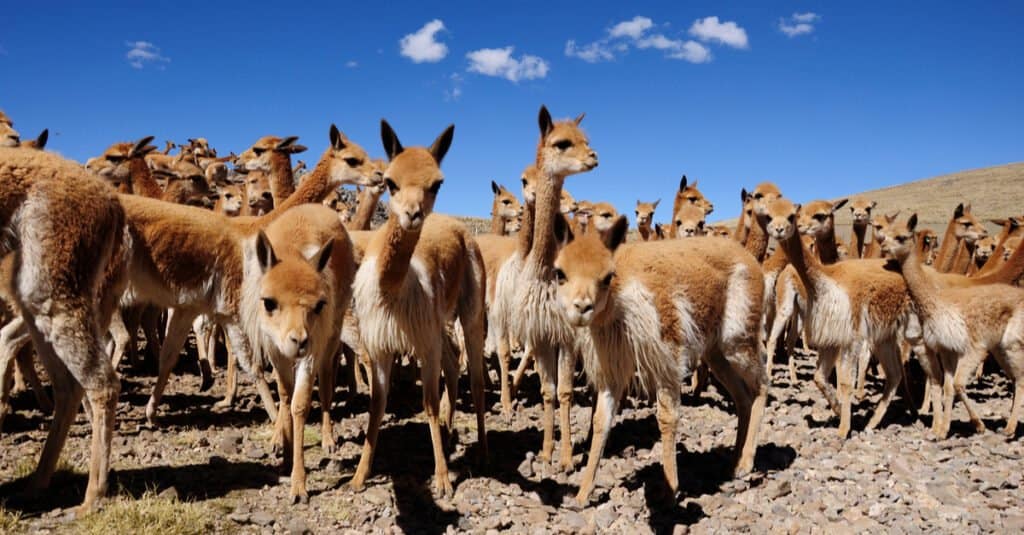
The mountain stands almost 15,000 feet high and attracts hikers from all over the world, many of whom spot vicuna.
©Carlos Sala Fotografia/Shutterstock.com
Llanganates National Park spans several provinces, including Cotopaxi, Napo, Pastaza, and Tungurahua. Established on January 18, 1996, this protected area covers about 848 square miles. One of the most well-known places in the park is Cerro Hermoso, also known as the “beautiful mountain.” It stands almost 15,000 feet high and attracts hikers from all over the world, many of whom spot alpaca, vicuna, and mountain rabbits. The park is most famous for the Treasure of the Llanganatis, a mythical treasure hidden in the Llanganates Mountains. According to stories, the Inca general Rumiñahui hid the gold treasure when the Spanish killed the Inca king, Atahualpa. Rumiñahui never told anyone where he hid the treasure.
6. Machalilla National Park

Interestingly, the waved albatross is a bird species that only lives in the Galapagos Islands and Machalilla National Park.
©Don Mammoser/Shutterstock.com
Another lovely park in Ecuador is Machalilla National Park, established in 1979. This is one of the smaller national parks in the country, covering about 290 square miles. It’s in Manabí Province and the nearest city is Puerto López. The national park is on the Pacific Ocean, giving visitors plenty of opportunities to admire amazing marine wildlife, like humpback whales. It spans beaches, a fog forest, and dry forest, with many of its animals and plants endangered. Interestingly, the waved albatross is a bird species that only lives in the Galapagos Islands and Machalilla National Park.
7. Podocarpus National Park
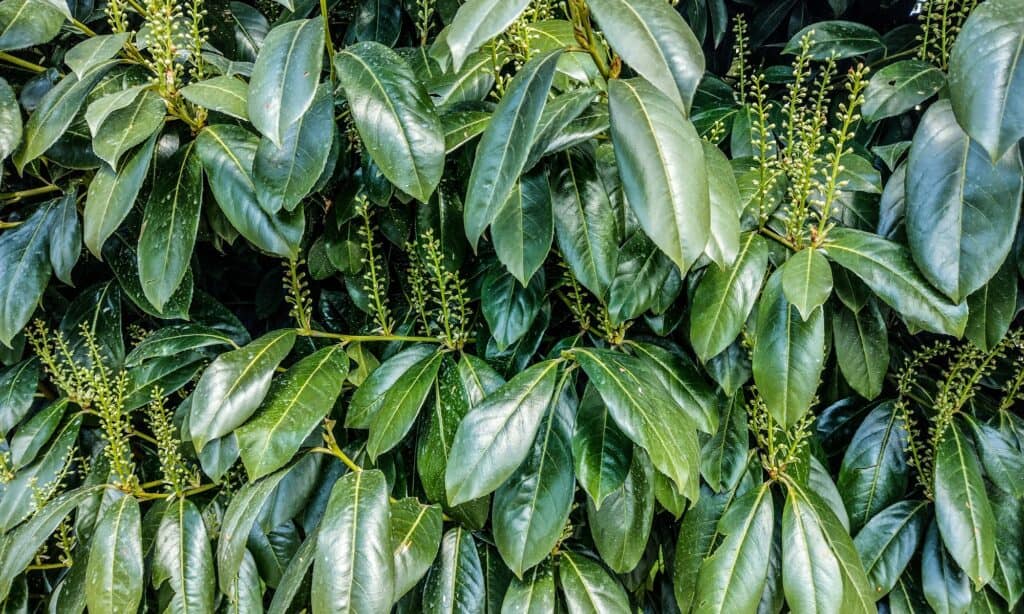
Many beautiful plants grow here, with some trees reaching 130 feet. In fact, the park earned the nickname “Botanical Garden of America.”
©iStock.com/Herman Vlad
In the provinces of Zamora Chinchipe and Loja, sits Podocarpus National Park, established in 1982. The park has a surface area of 565 square miles, with 85% lying in Zamora Chinchipe Province. Though smaller than others on this list, Podocarpus National Park is the most unique national park in the country, with a megadiverse zone and four ecological systems. These include Northern Andes, Southern Andes, Amazonian, and Pacific. Scientists still haven’t discovered many of the species in Podocarpus National Park! Many beautiful plants grow here, with some trees reaching 130 feet. In fact, the park earned the nickname “Botanical Garden of America.”
8. Sangay National Park
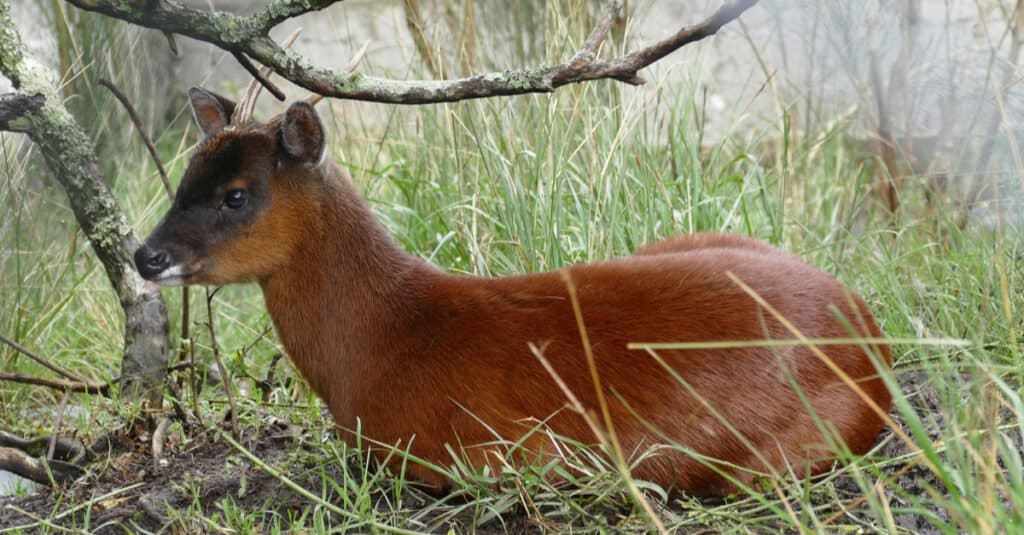
Hundreds of animal species make the park home, including northern pudus.
©Helge Zabka/Shutterstock.com
Sangay National Park is an Ecuadorian national park located in the Morona Santiago, Chimborazo, Tungurahua, Cañar, and Azuay Provinces. This large 2000- square-mile park has many habitats and three volcanos, including Tungurahua and Sangay, which are both active. Aside from volcanos, the national park has many glaciers and lakes. Some of the national park consists of wetlands, cloud forests, and tropical rainforests. Hundreds of animal species make the park home, including mountain tapirs, margays, Brazilian tapirs, northern pudus, and giant otters. There are also over 400 species of birds within the boundaries of the park. For a short while, this area was on UNESCO’s list of endangered sites because of poor practices like illegal poaching.
9. Sumaco Napo-Galeras National Park
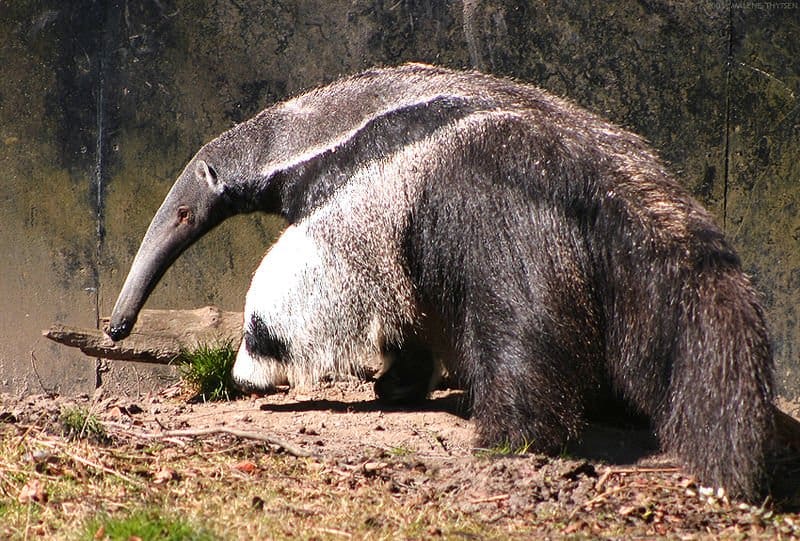
About 17 species of mammals live on the eastern slope of Sumaco, including the giant anteater.
©Malene Thyssen / Creative Commons – License
Sumaco Napo-Galeras National Park is a beautiful Ecuadorian site. The park was created in 1994 and covers 798 square miles, including Napo, Orellana, and Sucumbíos Provinces. Sumaco Napo-Galeras National Park is named for the Sumaco Volcano, which peaks at about 12,244 feet. Many people travel to the park to witness its biodiversity. The park is home to at least 280 species of birds. However, this region hasn’t been extensively explored, so this number may be larger. About 17 species of mammals live on the eastern slope of Sumaco, including the jaguar, the giant anteater, and the South American bear. There are even more amphibians and reptiles, specifically frog species like Ernest’s robber frog.
10. Yacurí National Park
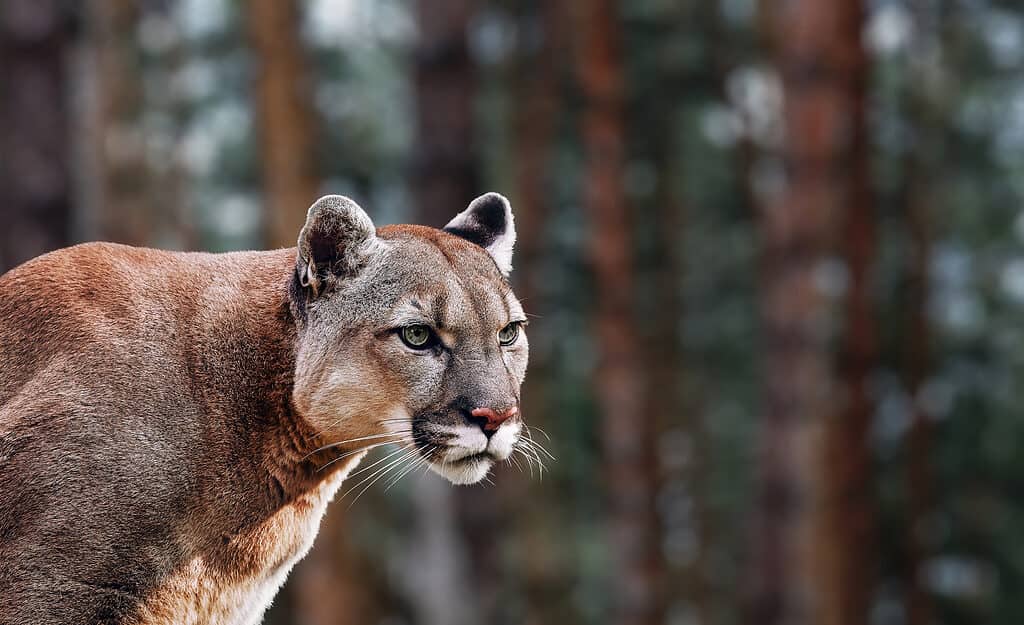
The
cougar
, though sadly a vulnerable species in these parts, is among the wildlife.
©Evgeniyqw/Shutterstock.com
Yacurí National Park lies on the border of Loja and Zamora Chinchipe Provinces, near the city of Amaluza. This small park, established in 2009, only spans 166 square miles. Four environments make up the national park: the Southern Andean Shrub Páramo, Eastern Andean Upper Montane Evergreen Forest, Southern Andean Dry Montane Shrubland, and Eastern Andean Cloud Forest. Out of 280 plant species, two are endangered and only 32 are endemic. The cougar, though sadly a vulnerable species in these parts, is among the wildlife. The most popular lake in Yacurí National Park is Laguna Negra, which is known for its medicinal waters. However, the largest lake in the park, Laguna Yacurí, is the park’s namesake.
11. Yasuní National Park
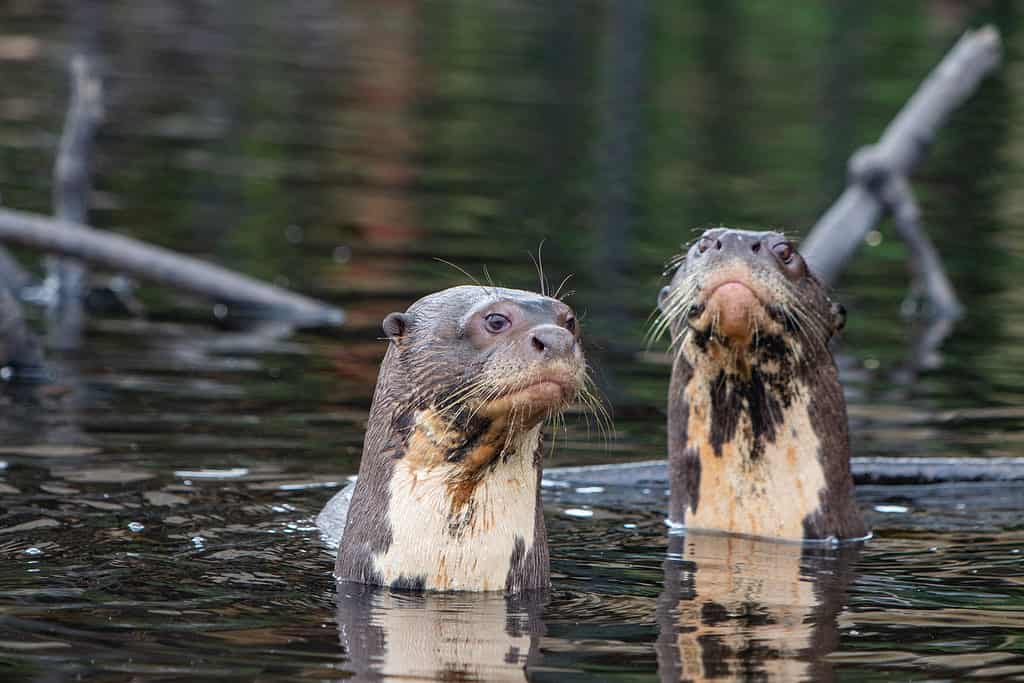
Giant otters are common in Yasuni National Park.
©Johnny Giese/Shutterstock.com
Last but not least, is Yasuní National Park, a 3,793-square-mile park in the Napo, Pastaza, and Orellana Provinces. This park is within the Napo moist forests ecoregion. The park is beautiful and filled with lakes and landmarks. It also has a lot of biodiversity. For example, giant otters are common, and you can find at least 500 species of fish in the region. Additionally, about one-third of the bird species in the Amazon live within Yasuní National Park.
The photo featured at the top of this post is © iStock.com/SL_Photography
Thank you for reading! Have some feedback for us? Contact the AZ Animals editorial team.






